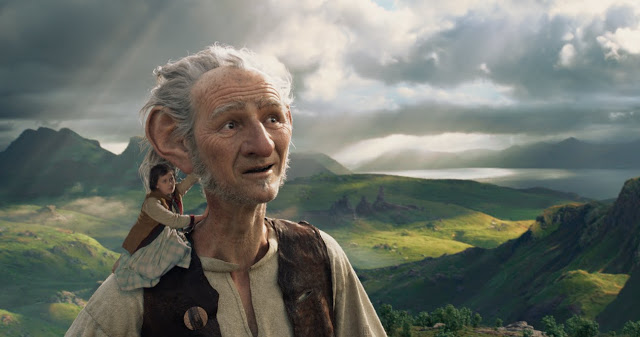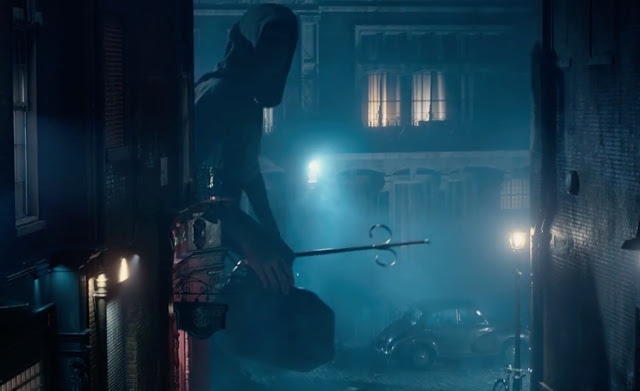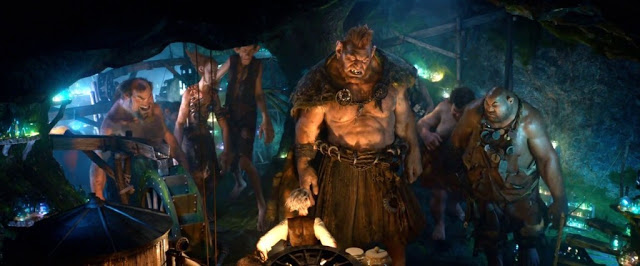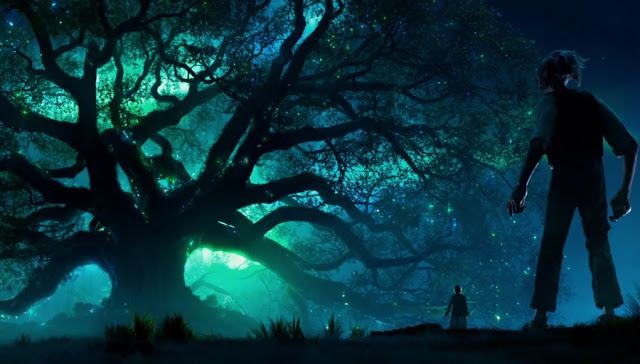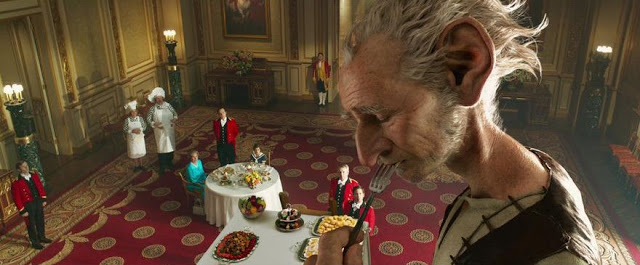For a director who is renowned for purveying inspirational entertainment, Steven Spielberg’s resume is surprisingly light on kid-friendly pictures. Sure, E.T. imprinted his inimitable brand of humanistic fantasy upon an entire generation, but beyond that, The Beard has largely eschewed family-oriented fare, preferring to smuggle his predilection for warmth and decency inside colder, darker films. (The only real exceptions are the ill-received Peter Pan sequel Hook and the underloved animated romp The Adventures of Tintin). Hell, he turned down Harry Potter. Still, Spielberg at his core is a crowd-pleaser, and in adapting Roald Dahl’s beloved children’s classic The BFG, he’s clearly invested in delivering excitement and wonder to a new era of wide-eyed kids.
Judged against these lofty goals, The BFG is a failure, even if it is also, on different terms, a worthy accomplishment. This weird, amorphous movie is by no means going to become a staple on cable television, destined to be re-watched over and over; it will not be endlessly quoted in the schoolyard or relentlessly imitated at the multiplex. (In fact, it is already fizzling at the domestic box office.) But in failing to craft a cultural touchstone, Spielberg has done something arguably more impressive: He’s made a children’s movie that’s interesting.
Which is not necessarily the same as good. The BFG has plenty of problems, chief among them its sluggish pacing. Primarily a friendly two-hander, it involves precious little incident, and most of the plot-heavy elements are either clumsily handled or perfunctorily dismissed. As someone who spent a significant portion of his childhood toggling between The BFG and James and the Giant Peach, I can appreciate Spielberg’s leisurely approach—he’s more concerned about capturing the syncopated rhythms and the delectable weirdness of Dahl’s world than in advancing his story. That’s fine, but it doesn’t excuse Spielberg’s apparent laziness, in particular his refusal to develop interesting villains.
Thankfully, the bad guys don’t show up for quite awhile, as The BFG‘s opening act centers on Sophie (Ruby Barnhill, excellent), a 10-year-old insomniac orphan who one night spies an enormous person skulking about the darkened streets of London. This would be our titular giant, and while he eventually proves to be friendly as well as big, he seems awfully scary at first, as he reaches through Sophie’s open window with a massive hand, snatches her and plunks her into his pocket, and whisks her off to Giant Country.
Parents may be troubled by this kidnapping, but they’ll likely be too amazed by Spielberg’s visual artistry to fret. Narratively, The BFG may run in fits and starts, but aesthetically, it’s a beautifully oiled machine, expertly marrying painterly imagery with new-age gloss. The BFG himself (nicely played by Mark Rylance, with an assist from motion-capture technology) is obviously impressive, a towering figure of potential menace who nevertheless—thanks to Rylance’s easy laugh and twinkling eyes—exudes geniality, silliness, and good humor. But what’s more noteworthy is the way in which this slender 24-foot-tall giant interacts with his surroundings. An early sequence, in which the BFG avoids detection from oblivious Londoners with fluidity and grace, is casually wondrous to behold, and it reminds us that regardless of his thematic intentions, Spielberg is an absolute pro with the camera. (His use of 3-D here is competent, though not nearly as memorable as in Tintin.) In this film, he is especially concerned with scale, first articulating Sophie’s diminutive stature within the BFG’s homey cave, then later conveying our friendly giant’s own relative smallness when compared to his colossal, nasty neighbors.
This brings us back to those aforementioned villains, and it’s here where The BFG falls flattest. As it turns out, the BFG is considered a “runt”, which means he’s picked on mercilessly by the ill-tempered 50-foot behemoths who also inhabit Giant Country. It’s possible to draw a connection here between the BFG and Sophie; both are parentless, and both appear to be victims of callous bullying. (We spend little time in Sophie’s orphanage, but one look at its gloomy hallways—plus cursory familiarity with the authority figures in Dahl’s oeuvre—is all that’s required to deem it uninviting.) But that idea never really sticks, probably because the other giants are all grotesque, one-dimensional slobs, as tedious as they are dim-witted. Dahl always took great joy in naming creatures, and here Melissa Mathison’s screenplay dutifully allots time for the BFG to identify each of his alliterative oppressors—they include Bloodbottler, Childchewer, and Gizzardgulper—but on screen, they’re all just CGI snores. The only distinguishable baddie is Fleshlumpeater (Jemaine Clement), but even he is a tiresome archetype of banal stupidity.
The sameness of the villains may explain why Spielberg largely ignores them, preferring instead to focus on the burgeoning friendship between the BFG and Sophie. His achievement here is qualified. Several stretches of The BFG feel listless, as though Spielberg is simply coasting on his visual prowess rather than telling a story. There is a leaden sequence in which the BFG elects to return Sophie to her orphanage, as well as an ill-conceived subplot involving a prior visitor to Giant Country that mostly functions to remind viewers of Spielberg’s fondness for symbolic red coats.
At the same time, the movie’s lack of propulsive action is oddly refreshing, even fascinating. Spielberg may be catering to kids, but he isn’t pandering to them, and his patience gives the film a uniquely luxuriant quality. This is best exemplified during a marvelous interlude in what is essentially a garden of literal dreams, where the BFG and Sophie seek to capture streaks of colored light. In moments such as this, the strains of the story fall away, and the majesty of Spielberg’s vision takes over. It’s a strange, unrushed, and entirely beautiful sequence, one that speaks to the rare power of fantasy filmmaking.
Of course, The BFG is a children’s movie, not a philosopher’s meditation. Yet even as it returns to its pedestrian plot, the film receives a surprising boost in its final act, thanks to a change in location to Buckingham Palace and the arrival of some excellent British actors. It is always a pleasure to watch the talent of the Continent, but that pleasure is amplified here, when scrupulously professional performers are placed in a universe that is delightfully and profoundly childish. And so, as Penelope Wilton widens her eyes, Rebecca Hall shakes her head, and Rafe Spall trembles in his regalia, The BFG finally achieves the proper balance between Spielberg’s mature craftsmanship and Dahl’s unapologetic juvenilia. (Things are only helped by John Williams’ characteristically whimsical score.) It is testament both to Spielberg’s ability in this passage and to his faltering elsewhere that the film’s most purely enjoyable scene features English royalty farting.
Forgive my inner child, but that’s funny. In a perfect world, The BFG would retain this sense of blissful, non-stop enchantment for its entire runtime. Instead, Spielberg’s incarnation is half-enchanting, half-enervating. It is impossible not to smile for much of this movie, which at times transported me back to those nights of ravenously reading Dahl’s book under the covers. But it is also far too easy to yawn, to sneer, to wish for something more. (For example, following its charming sojourn to the palace, the film’s climactic return to Giant Country is shockingly limp.) On occasion, The BFG shows us, both literally and figuratively, the stuff that dreams are made of. It also inadvertently reminds us that eventually, we all have to wake up.
Jeremy Beck is the editor-in-chief of MovieManifesto. He watches more movies and television than he probably should.

